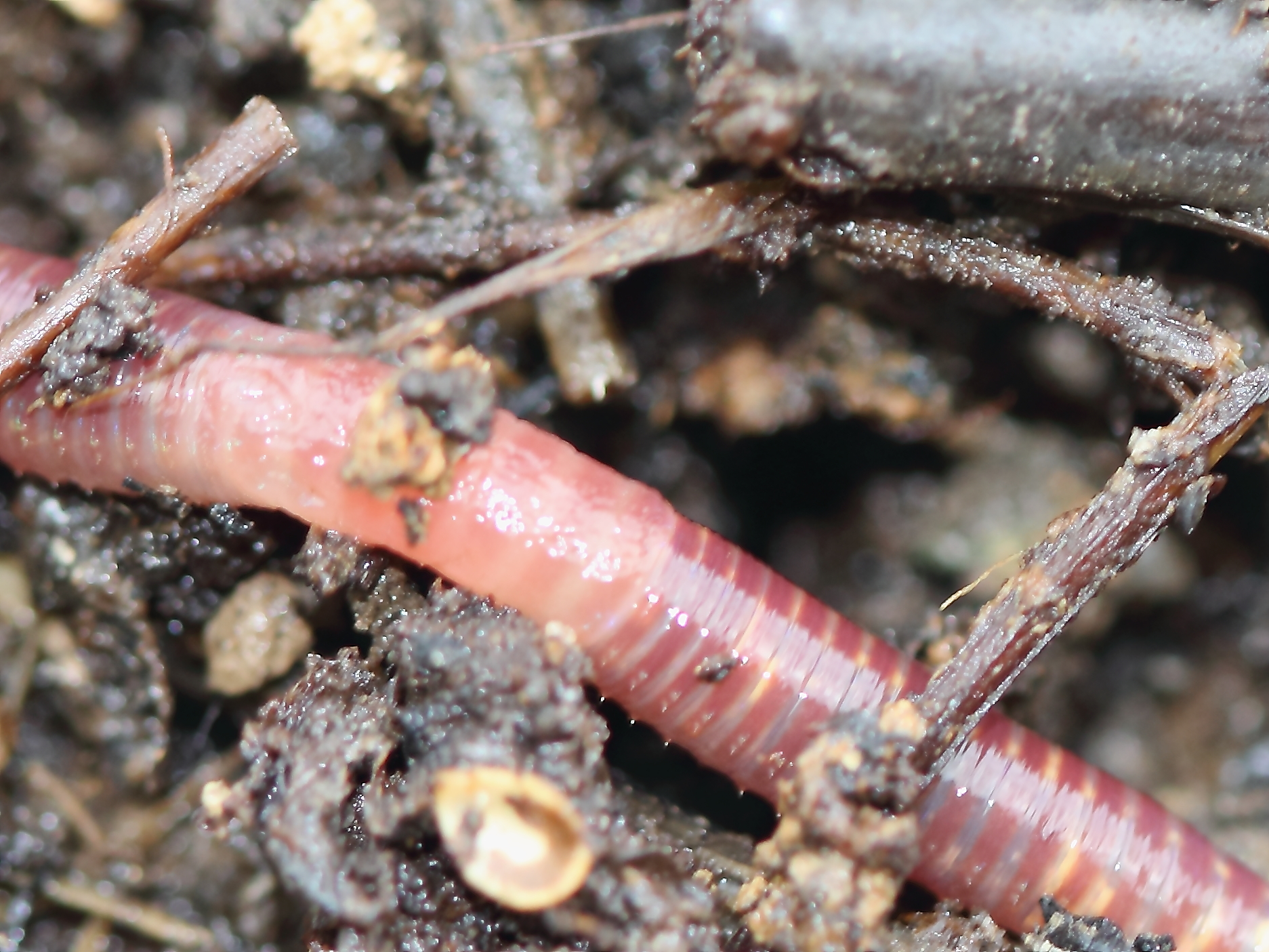|
Eisenia (annelid)
''Eisenia'' is a genus of earthworm An earthworm is a terrestrial invertebrate that belongs to the phylum Annelida. They exhibit a tube-within-a-tube body plan; they are externally segmented with corresponding internal segmentation; and they usually have setae on all segments. T ...s (annelids), named after Swedish scientist Gustav Eisen. References * Lumbricidae Annelid genera {{Annelid-stub ... [...More Info...] [...Related Items...] OR: [Wikipedia] [Google] [Baidu] |
Eisenia Fetida
''Eisenia fetida'', known under various common names such as manure worm, redworm, brandling worm, panfish worm, trout worm, tiger worm, red wiggler worm, etc., is a species of earthworm adapted to decaying organic material. These worms thrive in rotting vegetation, compost, and manure. They are epigean, rarely found in soil. In this trait, they resemble ''Lumbricus rubellus''. Red wigglers are reddish-brown in color, have small rings around their body and have a yellowish tail. They have groups of bristles (called setae) on each segment that move in and out to grip nearby surfaces as the worms stretch and contract their muscles to push themselves forward or backward. ''Eisenia fetida'' worms are native to Europe, but have been introduced (both intentionally and unintentionally) to every other continent except Antarctica. ''Eisenia fetida'' also possess a unique natural defense system in their coelomic fluid: cells called coelomocytes secrete a protein called lysenin, wh ... [...More Info...] [...Related Items...] OR: [Wikipedia] [Google] [Baidu] |
Gustav Eisen
Gustavus Augustus Eisen (August 2, 1847 − October 29, 1940) was a Swedish-American polymath. He became a member of California Academy of Sciences in 1874 and a Life Member in 1883. In 1893, he became the 'Curator of Archaeology, Ethnology, and Lower Animals' at the Academy. He later changed titles to 'Curator of Marine Invertebrates'. In 1938, he was appointed as an 'Honorary Member', which is considered the highest honor from the Academy. Biography Eisen was born in Stockholm, Sweden, on August 2, 1847. He attended school at Visby and later graduated from the University of Uppsala in 1873. He came to California that same year to participate in a biotic survey sponsored by the Swedish Academy of Sciences. He decided to make California his home and joined the California Academy of Sciences the following year. He was known to have diverse interests, including "art and art history, archeology and anthropology, agronomy and horticulture, history of science, geography and cartograp ... [...More Info...] [...Related Items...] OR: [Wikipedia] [Google] [Baidu] |
Earthworm
An earthworm is a terrestrial invertebrate that belongs to the phylum Annelida. They exhibit a tube-within-a-tube body plan; they are externally segmented with corresponding internal segmentation; and they usually have setae on all segments. They occur worldwide where soil, water, and temperature allow. Earthworms are commonly found in soil, eating a wide variety of organic matter. This organic matter includes plant matter, living protozoa, rotifers, nematodes, bacteria, fungi, and other microorganisms. An earthworm's digestive system runs the length of its body. An earthworm respires (breathes) through its skin. It has a double transport system made of coelomic fluid that moves within the fluid-filled coelom and a simple, closed circulatory system. It has a central and peripheral nervous system. Its central nervous system consists of two ganglia above the mouth, one on either side, connected to a nerve running along its length to motor neurons and sensory cells in each s ... [...More Info...] [...Related Items...] OR: [Wikipedia] [Google] [Baidu] |
Genus
Genus ( plural genera ) is a taxonomic rank used in the biological classification of extant taxon, living and fossil organisms as well as Virus classification#ICTV classification, viruses. In the hierarchy of biological classification, genus comes above species and below family (taxonomy), family. In binomial nomenclature, the genus name forms the first part of the binomial species name for each species within the genus. :E.g. ''Panthera leo'' (lion) and ''Panthera onca'' (jaguar) are two species within the genus ''Panthera''. ''Panthera'' is a genus within the family Felidae. The composition of a genus is determined by taxonomy (biology), taxonomists. The standards for genus classification are not strictly codified, so different authorities often produce different classifications for genera. There are some general practices used, however, including the idea that a newly defined genus should fulfill these three criteria to be descriptively useful: # monophyly – all descendants ... [...More Info...] [...Related Items...] OR: [Wikipedia] [Google] [Baidu] |
Wilhelm Michaelsen
Johann Wilhelm Michaelsen (9 October 1860, Hamburg - 18 February 1937) was a German zoologist who was a world authority on the Oligochaeta which includes the earthworms. He named and described more than a thousand new species. Michaelsen was born to Friedrich Rudolph and Johanna Catharina Ferdinandine née Köhn. In 1887 he commenced work at the Hamburg Zoological Museum, at first as a research assistant. He was later to become ''Hauptkustos'' (chief curator). Alfred Lothar Wegener (1880-1930) was a friend of Michaelsen and made use of his biogeographical work for some of his ideas on plate tectonics. Michaelsen named a species of earthworm after him as ''Wegeneriella'' Michaelsen, 1933. He also collaborated with John Stephenson. Though he also worked in the study of Tunicates and Polychaetes, Michaelsen was best known for his work on Oligochaeta. To that end, he travelled to southern regions of South America, Africa Africa is the world's second-largest and second-m ... [...More Info...] [...Related Items...] OR: [Wikipedia] [Google] [Baidu] |

